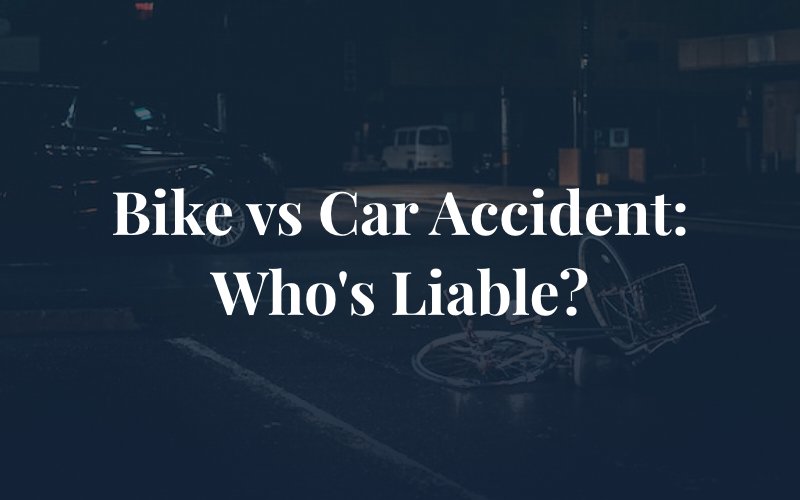
Florida’s year-round sunshine makes the state a beautiful destination for cyclists and a bike-friendly climate for residents to ride to work or school. Florida considers bicycles as vehicles, subject to the same traffic laws in the Sunshine State as motor vehicles. But what does that mean for motorists and cyclists when a collision occurs?
Unprotected cyclists are at high risk in accidents involving motor vehicles but that doesn’t mean that the motorist is always the liable party in a Florida traffic accident. Many Florida residents assume that the driver is always at fault in an accident, but in some situations, the cyclist could be the liable party.
Florida requires both cyclists and motorists to follow the same traffic laws on Florida roadways. This law also leaves both at equal risk of liability depending on the circumstances of the accident.
Wherever designated bike lanes aren’t present in Florida, bicyclists are allowed to share the roadways and travel with the flow of traffic. The law requires motorists to maintain a distance of at least 3 feet between their vehicle and a bicycle. Cyclists may change lanes to avoid road hazards or to make turns, provided they use appropriate hand signals.
When an accident occurs, Florida’s no-fault insurance laws require accident victims to file claims against their own insurance companies, For cyclists, their auto insurance or that of a family member within the same household covers their damages, including 80% of medical expenses and 60% of lost wages. Injuries and property damage sustained by motorists in an accident are covered by the driver’s auto insurance.
Because Florida’s basic personal injury protection (PIP) policies provide only $10,000 for compensation, many injury victims in bicycle accidents file claims against the at-fault party for catastrophic injuries that far exceed the $10,000 PIP coverage. But first, the injury victim is required to prove liability on the part of the party at fault in the accident.
Like any traffic accident, an accident between a motorist and a bicycle requires a thorough investigation to determine the cause of the accident and who was at fault. Investigations require examining the scene of the accident, determining who had the right of way, viewing photograph and video evidence where available, and deposing eyewitnesses. When one party was clearly at fault for the accident, the injury victim may file a personal injury lawsuit to gain compensation for damages. “Damages” in an accident claim include the economic and non-economic consequences of an accident to the victim.
Proving liability in a traffic accident includes demonstrating the following legal points of liability:
Motorists are at fault in the majority of bicycle accidents in Florida, but in some cases, bicyclists may be liable for damages if they fail to follow Florida’s traffic laws and cause an accident. For example, failing to use a hand signal before changing lanes to turn or rolling through a stop sign or red light leaves the cyclist liable for damages.
If a cyclist suffers serious or catastrophic injuries, and a driver is at fault, the injured cyclist could make a claim against the driver’s Bodily Injury Liability (BIL) coverage if they have this coverage in place. Although it’s not required by law, many drivers opt to add BIL coverage to their auto insurance policies. If the liable motorist doesn’t have BIL coverage, the injured cyclist may file a personal injury lawsuit against the driver to recover damages. A lawsuit allows the injury victim to add a claim for compensation for non-economic damages like pain and suffering as well as for economic damages like medical bills and lost wages.
It often takes an experienced Florida personal injury attorney to determine liability in a car vs, bicycle accident. At Shapiro | Delgado, we have the expertise and resources to ensure you get the compensation you are entitled to. Contact our personal injury attorneys in Sarasota and Bradenton today by calling (941) 954-4000 or reach out online.
Notifications